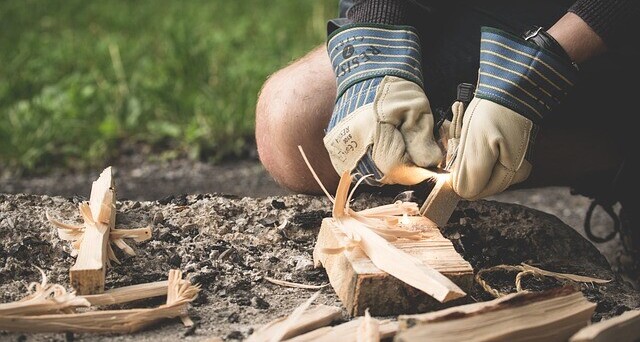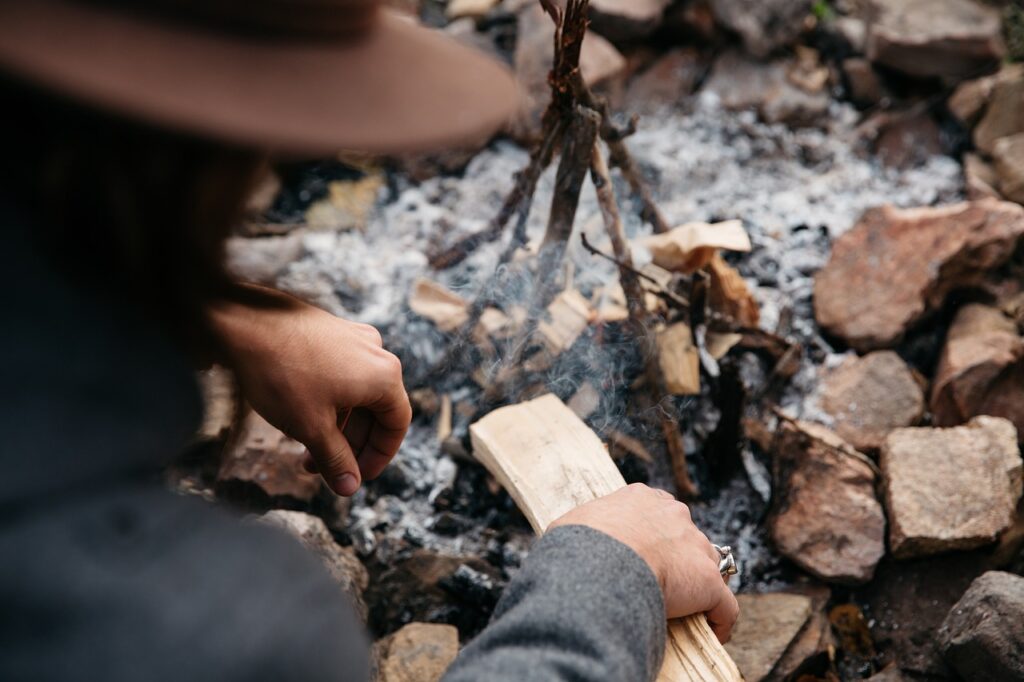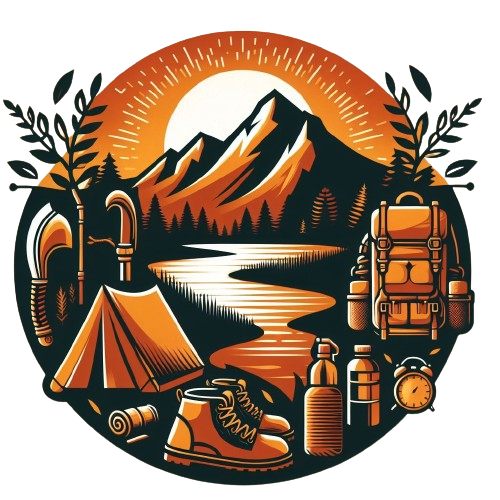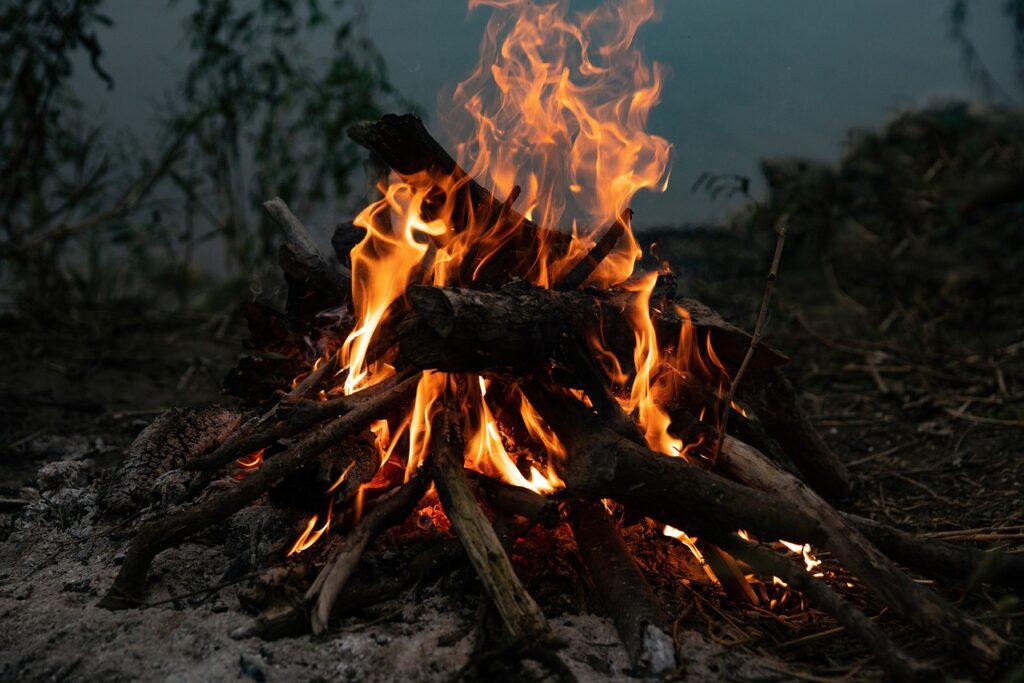A campfire is the heart of any outdoor adventure—whether you’re camping in the wild or enjoying a backyard bonfire. Building the perfect campfire isn’t just about creating warmth and light; it’s about doing it safely, efficiently, and with respect for nature. In this guide, we’ll walk you through every essential step, from selecting the right spot to ensuring your campfire is fully extinguished.
Preparing the Right Spot for Your Campfire
The foundation of a successful campfire begins with choosing the right spot. Your safety and the environment depend on your location and preparation.
Selecting a Safe Location
Before you strike a match, think about safety. Avoid setting up your campfire under low-hanging branches, as the fire could catch them, causing a dangerous spread. It’s also important to steer clear of dry, flammable foliage, such as dead grass, leaves, or pine needles. Dry conditions make fires harder to control and can easily lead to accidents.
Checking Campfire Regulations in Your Area or Park
Many parks and outdoor areas have specific rules about where and when fires can be made. Always check local regulations to avoid violations and to ensure you are adhering to safety protocols that protect the environment.
Clearing the Ground
Once you’ve selected your spot, clear the ground of any leaves, pine needles, and debris. This prevents the fire from spreading beyond the intended area and minimizes the risk of uncontained fires. Clear a generous area to ensure that the fire stays contained.
Creating a Fire Ring Using Stones
Use rocks or stones to form a fire ring. This will help contain the fire, preventing it from spreading. The fire ring also acts as a buffer, reducing the risk of embers igniting surrounding foliage. Ensure the stones are not too dry, as dry rocks can explode when heated.

Gathering and Preparing Firewood
The right firewood is essential for building a fire that lasts, stays hot, and is easy to manage.
Understanding Firewood Types
Firewood comes in three categories: tinder, kindling, and fuel wood.
- Tinder: This is the smallest material, such as dry leaves, grass, or pine needles, used to start the fire.
- Kindling: Slightly larger sticks and twigs that catch fire once the tinder is ignited.
- Fuel Wood: Larger pieces of wood that keep the fire going once the kindling has been established.
Collecting Materials from Your Surroundings Responsibly
Always gather firewood sustainably. Avoid cutting live trees or branches, and instead, look for fallen, dead wood that’s already on the ground. It’s also important to only take what you need and not strip the area of resources.
Learning to Differentiate Between Dry and Green Wood
Dry wood burns better than green wood. Green wood, which comes from living trees, is typically moist and hard to ignite. When collecting firewood, always check if the wood is dry by snapping a piece. If it breaks easily, it’s likely dry. If it bends or feels damp, it’s green and won’t burn as efficiently.
Properly Storing Wood
Once you’ve gathered your firewood, keep it dry by stacking it off the ground, using a tarp or shelter to protect it from rain or moisture. Dry wood burns faster, cleaner, and produces less smoke, making your fire experience more enjoyable.

Building and Lighting the Campfire
Now that you have the right materials, it’s time to build and light your campfire. There are several methods to structure a fire, but we’ll focus on two of the most popular.
The Classic Teepee Style vs. Log Cabin Method
- Teepee: This is the traditional campfire style. It involves stacking kindling in a cone shape, with tinder in the center. This method creates a lot of heat and is great for quick, high flames.
- Log Cabin: For a longer-lasting fire, build a log cabin by arranging larger pieces of wood in a square or rectangle around the kindling. This method provides more consistent heat and burns for a longer time.
Step-by-Step Guide to Structuring a Campfire Efficiently
- Start by placing a handful of tinder in the center of your fire ring.
- Build a small teepee of kindling around the tinder, leaving room for airflow.
- Gradually add larger pieces of wood around the teepee in a teepee or log cabin style.
- Ensure the wood is stacked loosely enough to allow air to circulate, as oxygen is necessary for the fire to burn efficiently.
Using Natural vs. Artificial Fire Starters
If you’re new to campfires, or if the conditions are wet, you might want to use artificial fire starters like fire starter cubes, matches, or fire sticks. However, natural fire starters—such as dry leaves, birch bark, or pine cones—are a great way to stay in tune with nature.
Here is a post about different fire starting methods: Fire Starting Methods In The Outdoors: Which Is Best?
Ensuring a Steady Airflow for Sustained Burning
Once the fire is lit, maintain a steady airflow by adjusting the arrangement of the wood. If the fire is too smoky or weak, gently shift the pieces of wood to allow more air circulation. Proper airflow is crucial for the fire to stay alive and burn efficiently.
Campfire Safety and Cleanup Practices
When it comes to campfires, safety should always be your top priority, both during the fire and after it’s been extinguished.
Essential Campfire Safety Tips
Never leave your campfire unattended. Always keep a bucket of water, sand, or dirt nearby to quickly extinguish the fire if needed. It’s also important to maintain a reasonable fire size—too large of a fire can be dangerous and hard to control.
Keeping the Fire Manageable
Always start with a small fire and gradually add more wood as needed. A manageable fire is not only safer but also easier to control and extinguish once you’re done. Never let the fire get out of hand or spread beyond your designated fire ring.
Techniques to Fully Extinguish the Fire
To extinguish the fire, pour water over the flames and stir the ashes with a stick to ensure that all embers are out. You should continue adding water and stirring until the fire is completely out and the ashes are cool to the touch. Never just leave the fire to burn out on its own—this could lead to a wildfire.
Leave No Trace Principles
As with any outdoor activity, following the Leave No Trace principles is crucial. Once your fire is out, make sure to clean up any trash, leftover wood, or debris. Scatter the ashes in a way that blends in with the natural environment, and always leave the campsite as you found it, if not cleaner.
Building the perfect campfire is more than just starting a flame—it’s about doing it safely, responsibly, and with respect for nature. By following these steps, you can enjoy a crackling fire without compromising the environment or your safety. Happy camping!
Here’s a little transparency: Our website contains affiliate links. This means if you click and make a purchase, we may receive a small commission. Don’t worry, there’s no extra cost to you. It’s a simple way you can support our mission to bring you quality content.

